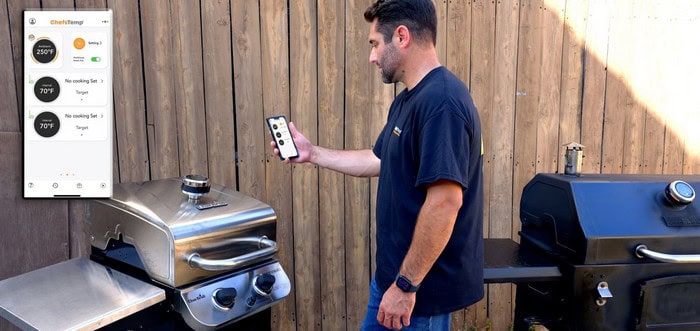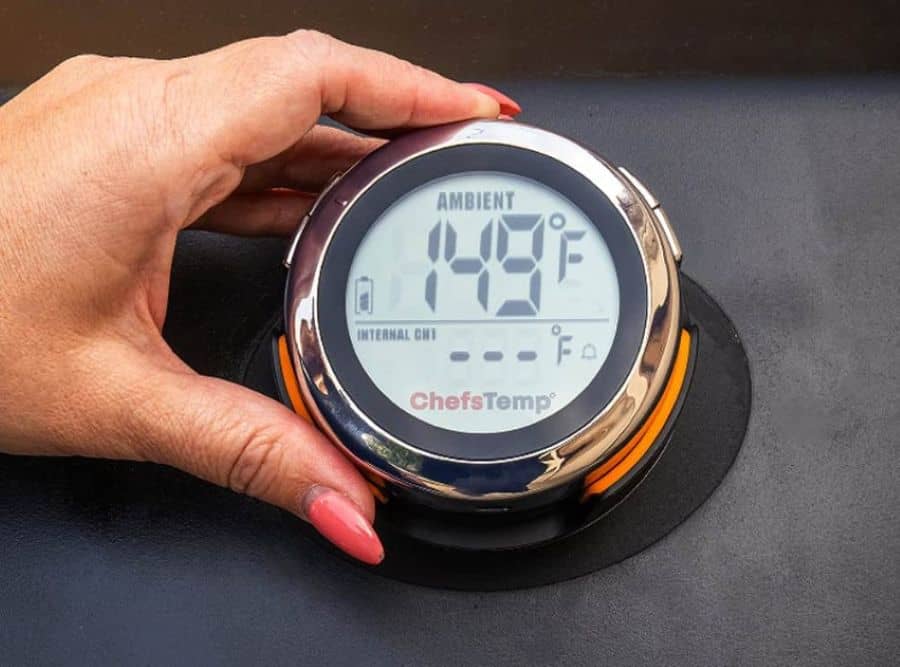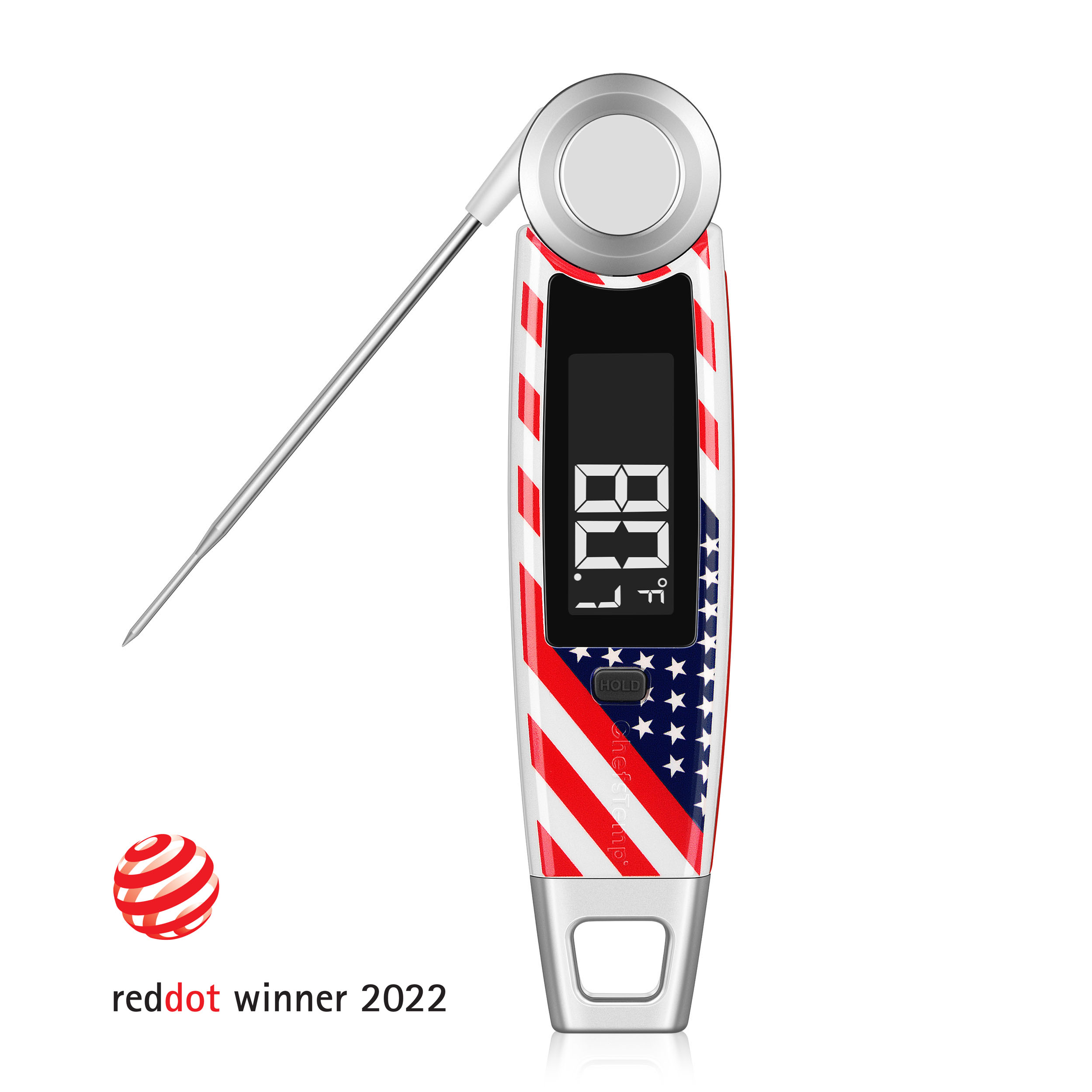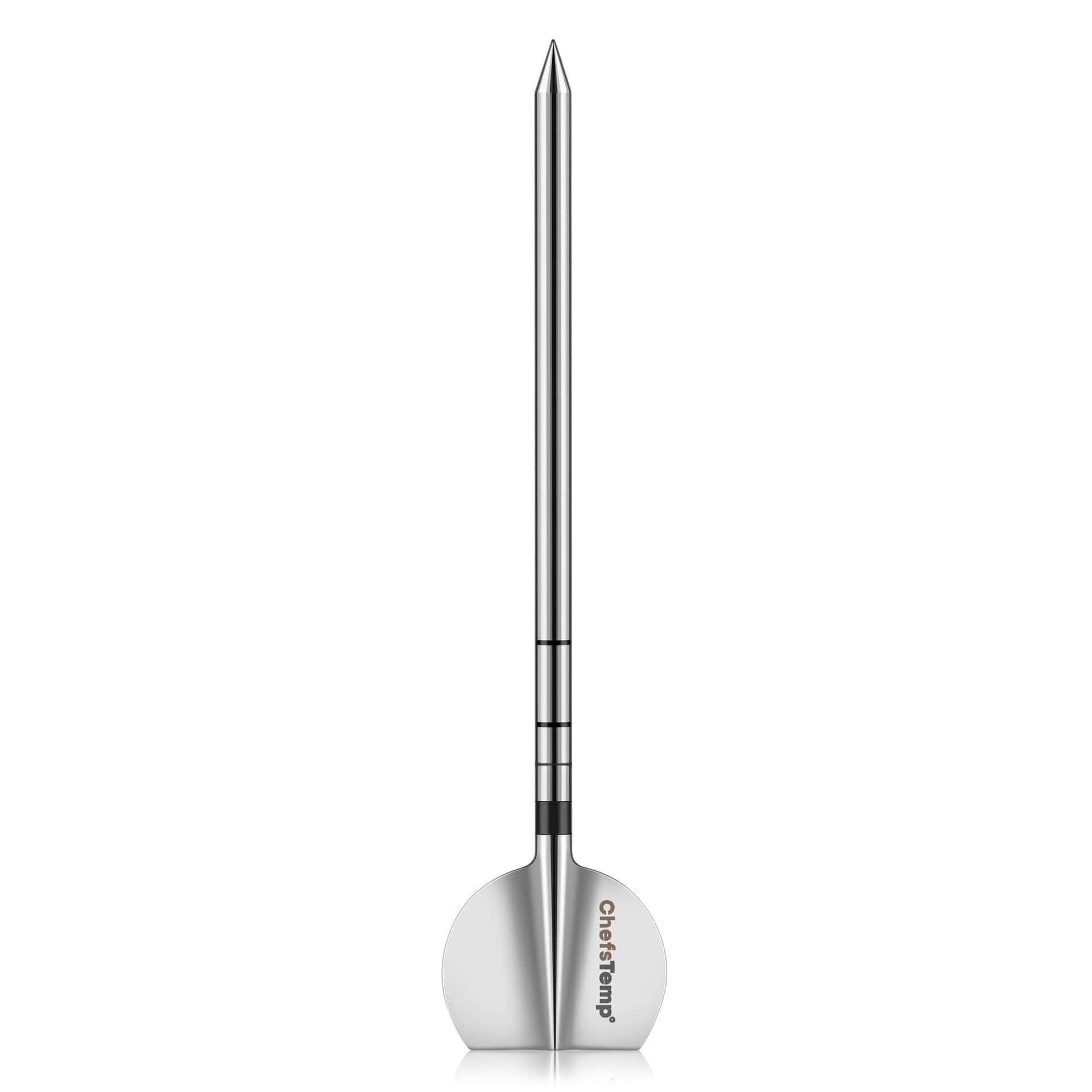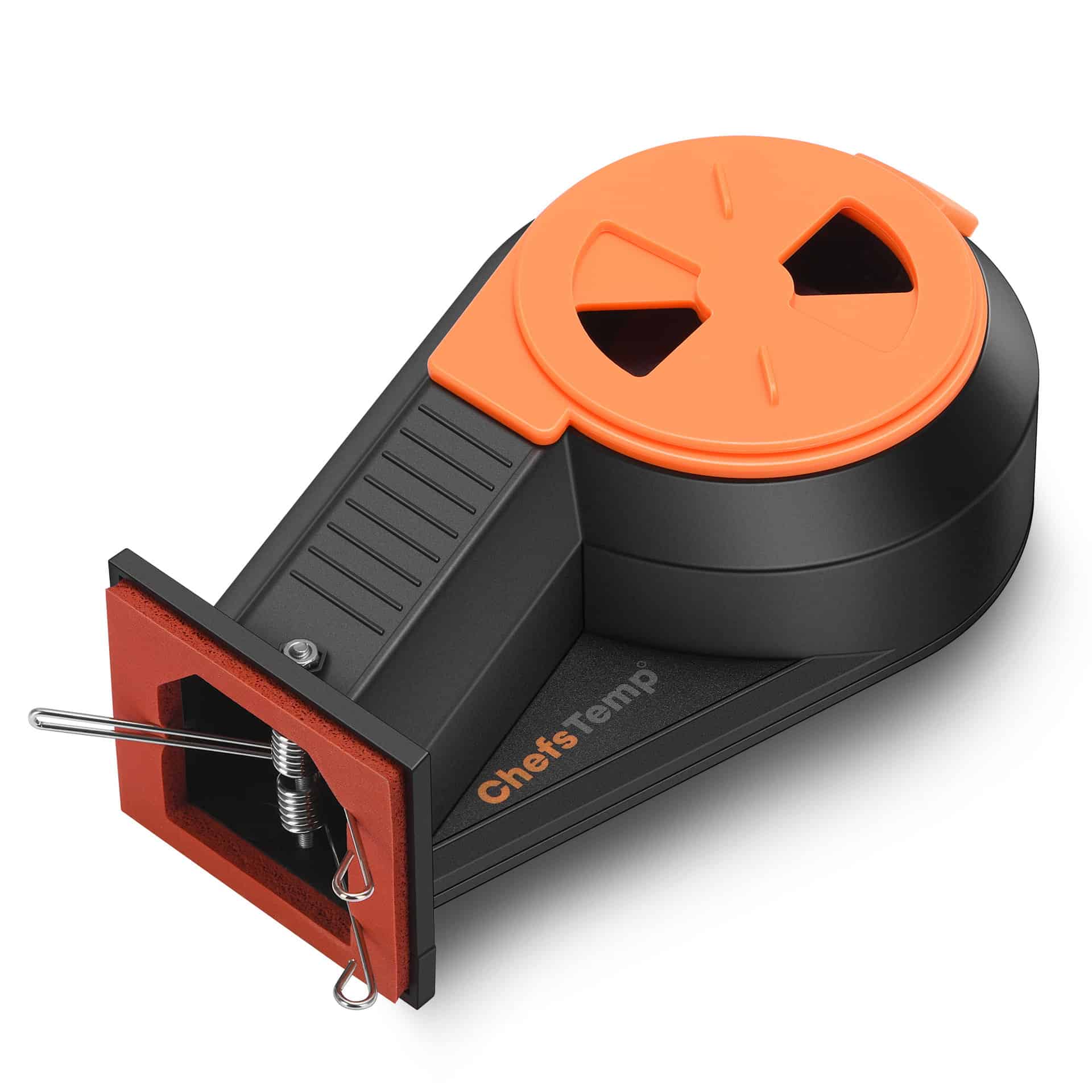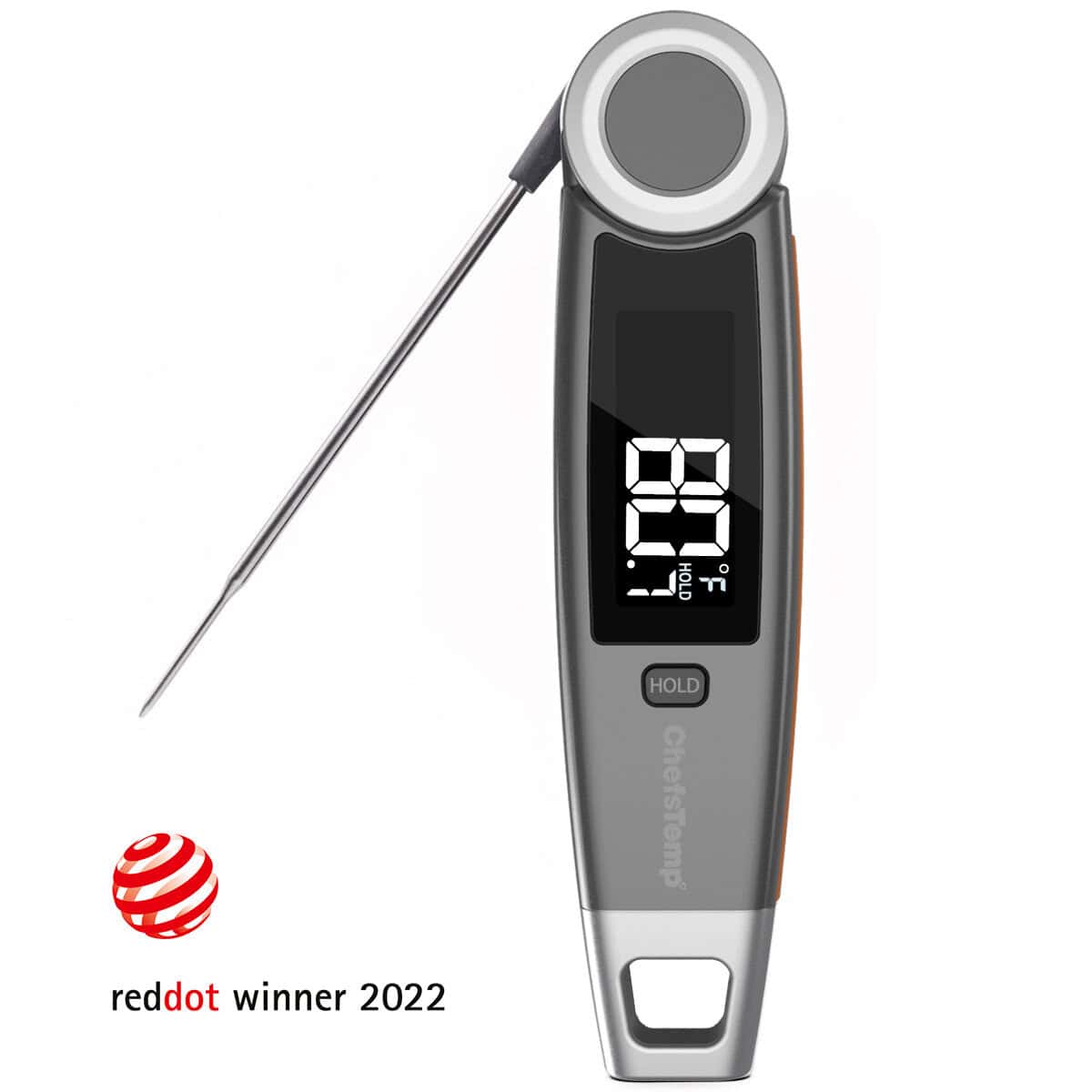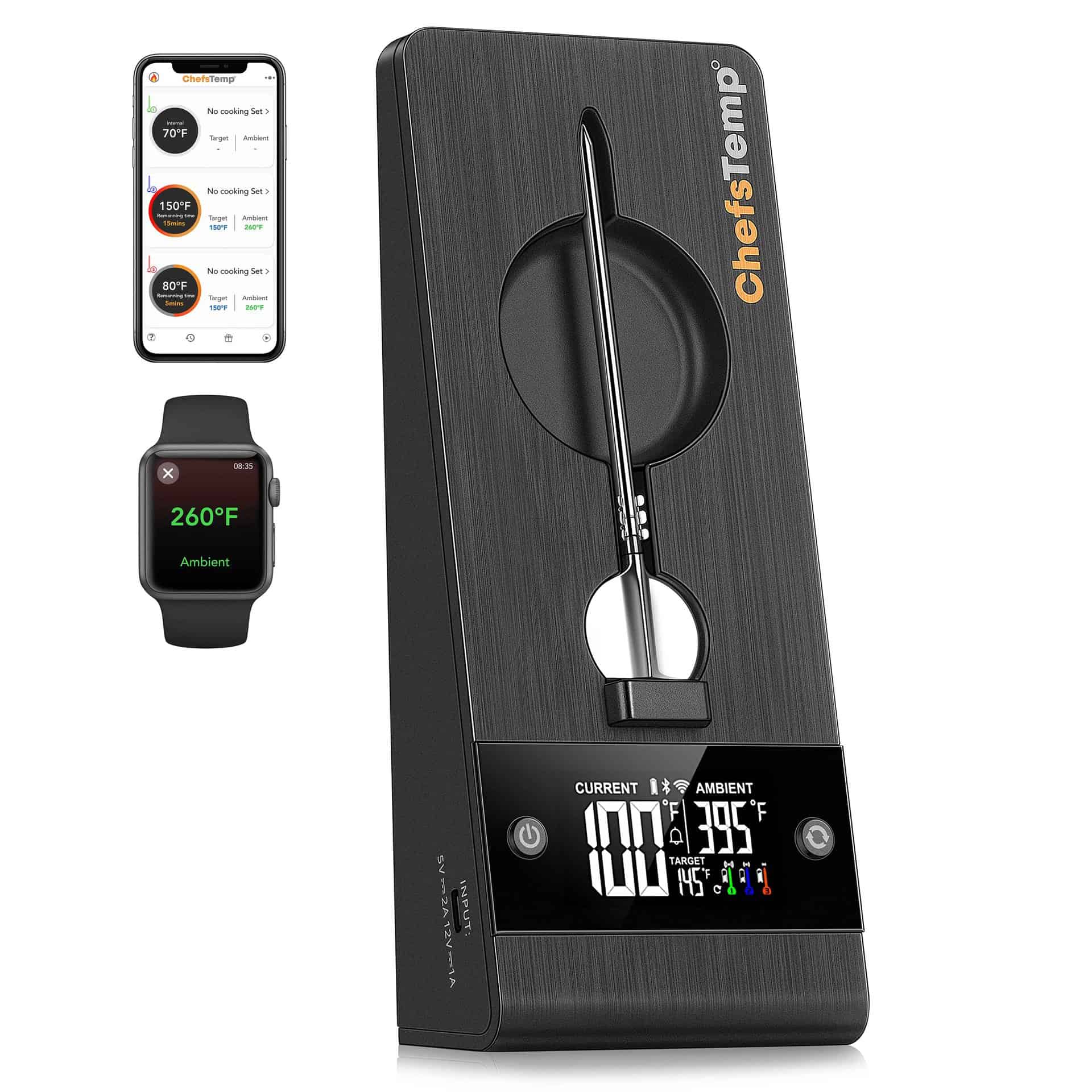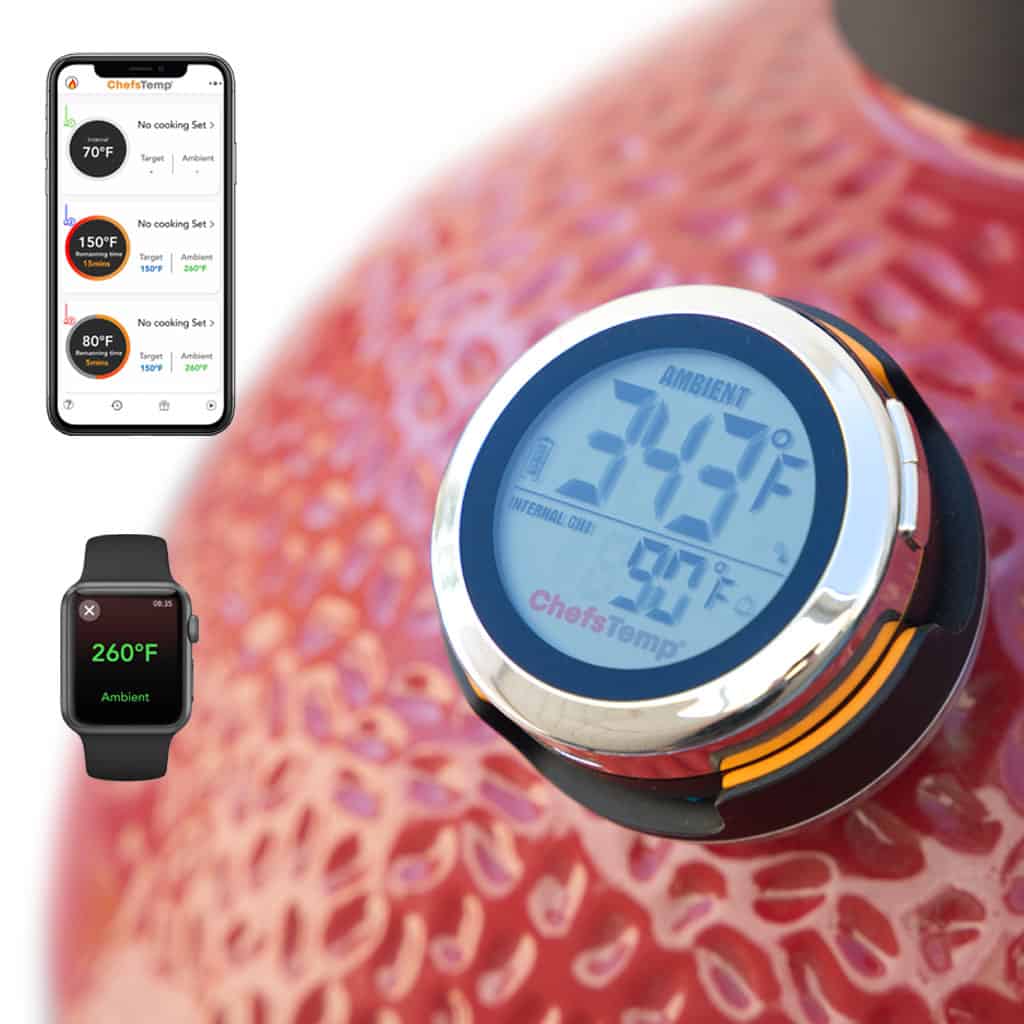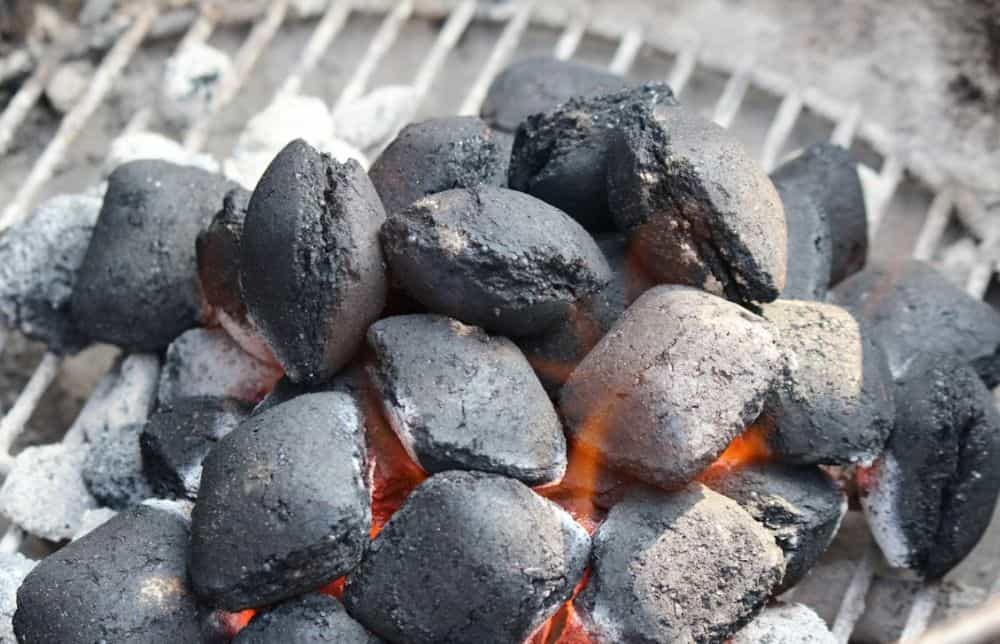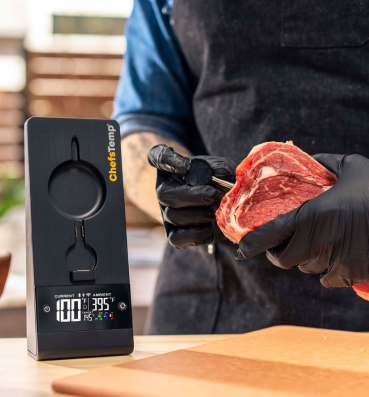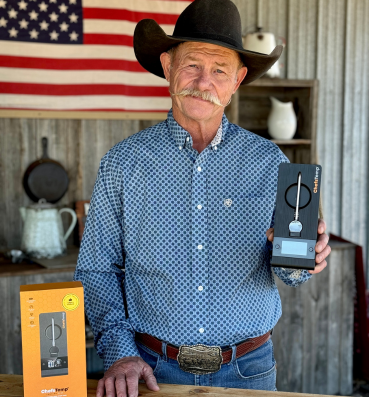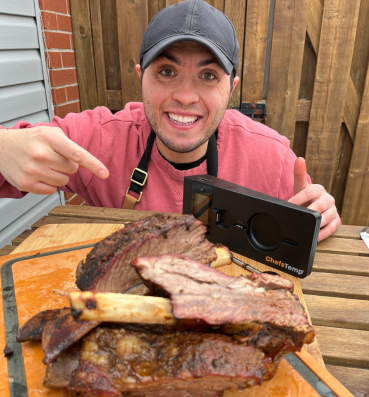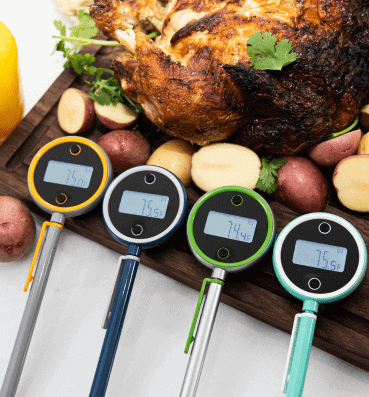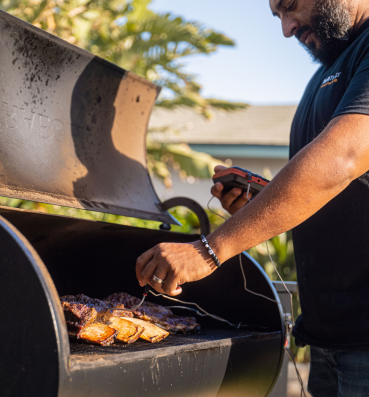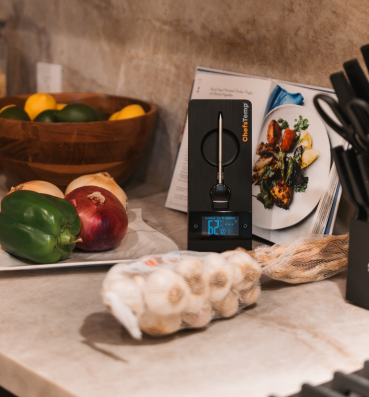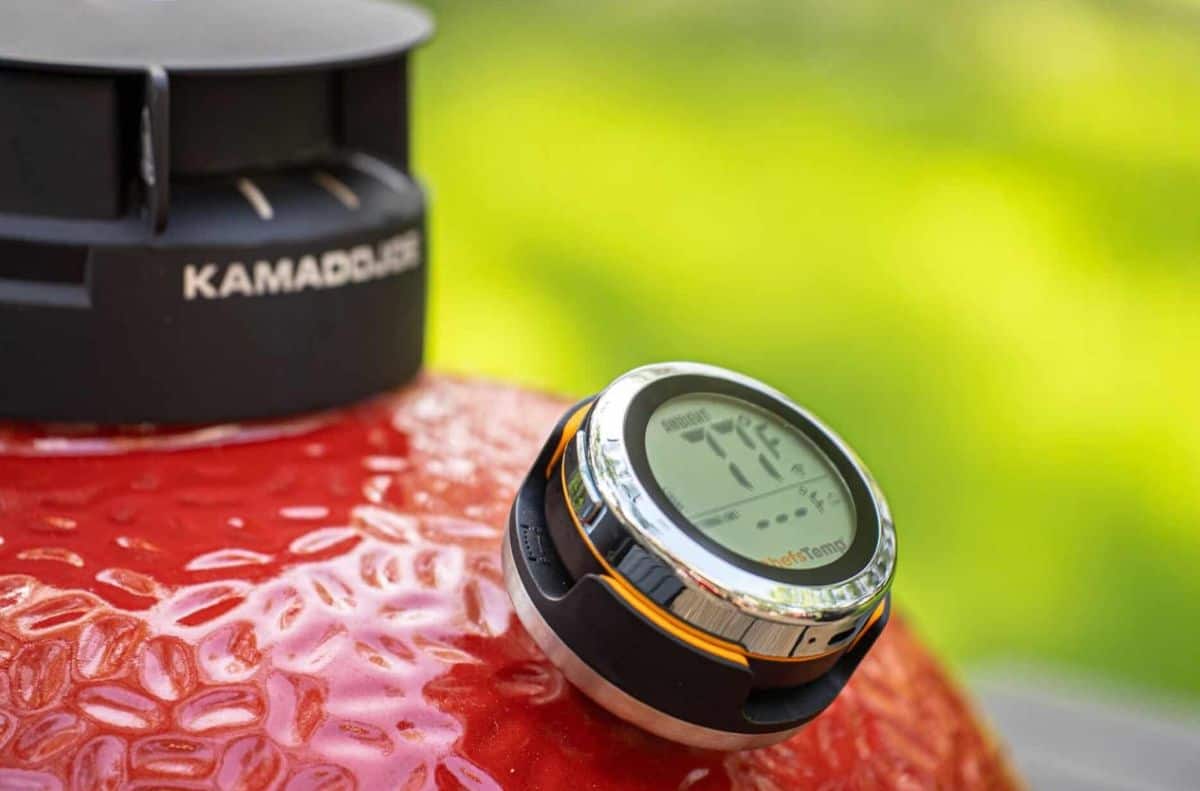
Wireless Meat Thermometers vs Built-In Thermometers: Which Wins for Kamado Grilling?
If you’re a grill enthusiast, it’s likely that you’ve stumbled upon kamado grills in your search. This grill has been making waves online, and people are curious. What is a kamado grill? Is it worth it?
If you already have one, you’re probably looking for ways to maximize the grilling results. This guide explores what makes this grilling method exceptional and the best Kamado Joe grill accessories worth investing in.
Table of Contents
The Kamado Grill Principle
Understanding the Kamado grill principle is the best way to know why it’s so unique and the best accessories to complement this cooking method.
The secret lies in the ceramic material. Whereas most grills utilize circulating hot air, it’s the ceramic material that makes the difference. Ceramic locks in moisture better, keeping the meat juicier.
Ceramic stores heat once you produce fire through the charcoal. This means that the grill will require a smaller amount of energy (compared to traditional grills) to maintain the ideal grilling temperature.
Aside from the energy efficiency of a Kamado grill, using ceramic enables the ideal temperature to be maintained for a longer period. For example, you can keep the grill within the ideal temperature range for up to 24 hours. The heat-storing ceramic eliminates the need to add coal to maintain the desired temperature continually. For this reason, the Kamado grill is also reliable for various cooking methods, including braising, smoking, roasting, and low-and-slow cooking.
Another distinctive feature of the Kamado grill is the precise temperature management. It’s also the most crucial one, as it can make or break the cooking results. Unfortunately, built-in thermometers may not be as reliable, so you may need to consider a Kamado Joe grill upgrade. Knowing how to navigate temperature control with the right tool can make you a master of the Kamado grill.
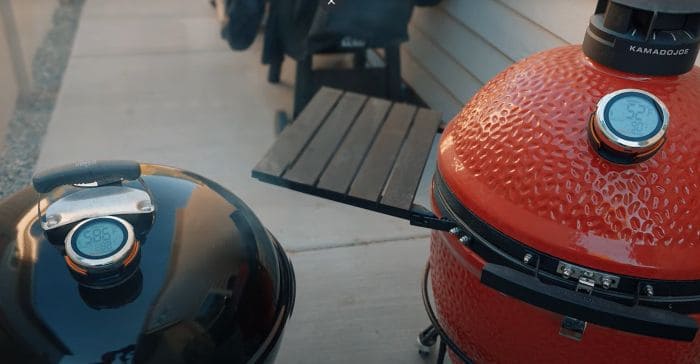
Wireless Meat Thermometers vs Built-in Thermometers
Topping the list of must-have Kamado Joe accessories are thermometers. However, the real question lies in the specific type of thermometer to use. While Kamado grills have a built-in thermometer, is it worth the added expense to upgrade to wireless meat thermometers?
Let’s break down each to help you make the right decision.
Built-in Thermometers Pros & Cons
Built-in thermometers are those that are attached to the dome or lid of a Kamado grill. It is designed to measure the internal grill air temperature. However, there are accuracy issues with the original analogue gauge that necessitate an update to more accurate Kamado grill accessories.
There is a considerable discrepancy between the internal grill air and the dome temperature. If you rely on the built-in thermometer reading, you won’t achieve the right cook, texture, and flavor in the meat due to the discrepancy.
Aside from the inaccuracies due to the placement being far from the food, there are several other issues with built-in thermometers. It is also notable for its slow response time to temperature changes. With heated air constantly circulating inside the dome, temperature fluctuations will occur throughout the cook. It’s crucial to know how to manage these fluctuations for a consistent cooking result.
The original dome gauge is best for quick grilling sessions, or those types of cook that don’t require precise temperature readings.
Wireless Meat Thermometers Pros & Cons
A wireless meat thermometer, such as the ProTemp S1, is one of the most common accessories for the Kamado Joe grill. It aims to fill the gap between what the dome gauge lacks to ensure cooking accuracy.
Wireless meat thermometers come with a wireless probe. They use platinum sensors that capture data about the temperature and transmit that into the app (once connected to the ProTemp S1.
Real-time tracking is the main advantage of wireless meat thermometers for Kamado grills. You can even set up alerts on your phone so you are notified once it reaches your desired temperature.
Aside from real-time tracking, coupling it with the remote monitoring capabilities make the wireless meat thermometer a must-have for serious grillers. Built-in thermometers require you to walk back and forth to the grill to check the temperature. It can be an issue when it is too hot or cold outside. With a wireless meat thermometer, there is no need to go out. You can simply log into the app on your phone and monitor the temperature without stepping outside. You can even run errands, do other household chores, or shop while the meat is grilling. Since most smoking sessions can last up to 10 hours (some overnight), this capability is such a handy addition to your grilling experience.
Gone are the days when you are stuck in front of the grill; now, you can entertain friends and family. It gives you more flexibility to do other things without compromising on the quality and flavor of the grilled meat.
Modern wireless thermometers have advanced features that allow you to customize the settings. The customized alerts give maximum control over how you cook your meat, such as when you reach a specific internal temperature. The meat is cooked perfectly; not overdone or undercooked.
The downside to wireless meat thermometers is they require a significant monetary investment, especially if there is a dome gauge already available. But the access to more precise tracking and temperature control is well worth the upgrade.
Given these features, wireless meat thermometers for grilling when precision matters most.
Wireless vs Built-in Thermometers
Let’s take a closer look at the wireless and built-in thermometer to determine the best Kamado Joe grill accessory.
1. Accuracy and Performance
Temperature accuracy is a crucial consideration when choosing accessories for a Kamado grill. Wireless thermometers have an edge over built-in thermometers because they use platinum sensors that are more accurate and precise in reading temperature changes. And speaking of changes, the S1 also allows for temperature compensation. It factors in variations in the external environment to prevent them from affecting the temperature reading on the food, ensuring more precise temperature management.
While the S1 does not have probes that can be inserted into the meat, it is long-stemmed, allowing it to reach close to the cooking surface. It allows you to keep track of the cooking surface and make predictions about when the food is done or not.
Wireless thermometers are also ideal for cooking with indirect heat and low-and-slow cooking or grilling methods. For example, you can cook a brisket for 10 hours on the Kamado grill using wireless thermometers to attain consistent temperature throughout the cook and achieve the best-cooked brisket.
2. Convenience and Ease of Use
Built-in thermometers do not require setup; they are already built into the grill. On the other hand, wireless thermometers require pairing and setup. Therefore, wireless thermometers would be more challenging for non-tech-savvy grill enthusiasts.
Once set up, wireless thermometers provide convenience and remote monitoring capabilities. You can easily check the temperature when grilling from your phone or app. However, with the dome analogue gauge, you have to constantly babysit the grill to check if you’ve reached the right temperature. It can be tedious and exhausting, especially when you have to do this for several hours and with challenging weather conditions.
Choosing between built-in and wireless thermometers requires assessment of the user’s tech comfort level. Are you a tech savvy user and values data precision? Or do you prefer a tool that is simple and easy to use? You can choose what’s convenient for you, but make sure you don’t compromise the cooking results.
3. Cost and Value
Since built-in thermometers come with the Kamado grill, you won’t have to pay extra for it. Wireless thermometer models range from $50 to $200, depending on the brand, features, and capabilities.
So, what does it cost you? Consider this question when choosing what’s the right Kamado Joe grill upgrade. Wireless thermometers might require a monetary investment, but the value they deliver in terms of improved cooking quality and more consistent results more than pays for itself.
Conclusion: Which are the Best Kamado Joe Grill Accessories?
Kamado grills are challenging to master. While it promises the best grilling results, it requires expert hands.
Even if you’ve spent years grilling, grilling involves numerous variables that cause fluctuations in temperature readings, making it difficult to precisely cook the meat. Equipping yourself with the right tool, such as a wireless meat thermometer, gives you more confidence when cooking with meat on a Kamado grill, regardless of your cooking style. With its accuracy, versatility, and precision cooking, you can host casual weekend cookouts and barbecue with more confidence.
Discover Other ChefsTemp Products
Discover more recipes and learn kitchen tricks by joining our cooking family on Facebook.
You may also like:

